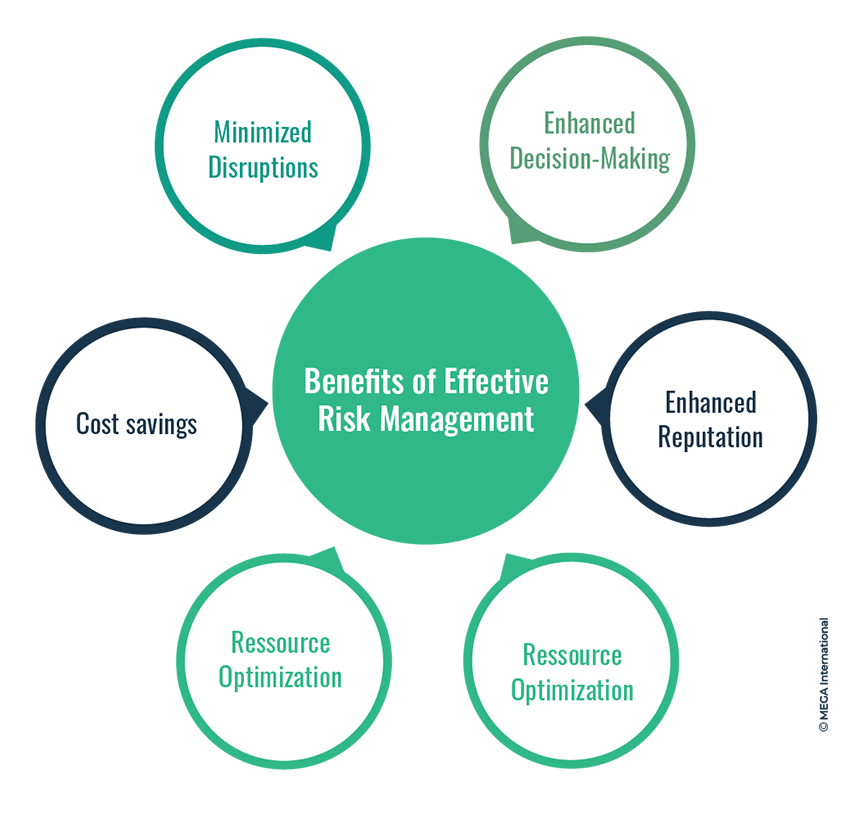Why Organizations Should Focus on the Importance of Risk Management Now More Than Ever
Why Organizations Should Focus on the Importance of Risk Management Now More Than Ever
Blog Article
Exploring the Value of Risk Management for Effective Decision-Making Techniques
In the complex world of organization, Risk Management emerges as a crucial variable in the decision-making process. The capacity to identify potential hazards and opportunities, and plan as necessary, can lead to the difference between success and failing.
Recognizing the Principle of Risk Management
Risk Management, a vital part in decision-making, is often misconstrued or oversimplified. Typically, it describes the recognition, assessment, and prioritization of threats to reduce, check, and control the probability or impact of unfortunate events. Nevertheless, it's not merely regarding protecting against unfavorable end results, but additionally concerning recognizing prospective possibilities. Risk Management includes regimented and structured methods, making use of data and informative analyses. It requires a detailed understanding of the company's context, purposes, and the possible threats that could thwart them. From economic unpredictabilities, legal liabilities, critical Management errors, to crashes and all-natural calamities, it deals with different risks. Significantly, reliable Risk Management is not stagnant; it's a constant, positive procedure that evolves with changing conditions.
The Role of Risk Management in Decision-Making Processes
In the world of strategic preparation and service operations, Risk Management plays an indispensable role in decision-making procedures. Risk Management therefore becomes a vital device in decision-making, assisting leaders to make educated selections based on a comprehensive understanding of the dangers involved. Risk Management offers as an important part in the decision-making procedures of any kind of company.

Exactly How Risk Management Boosts Strategic Planning
In the context of strategic planning, Risk Management plays an essential duty. Initiating with the identification of prospective dangers, it additionally extends to the execution of Risk mitigation actions. The function of Risk Management is not static but vibrant, as it requires continuous surveillance and adjusting of techniques.
Identifying Possible Risks

Implementing Risk Reduction
Having actually established the relevance of identifying prospective dangers, the following action is to discover Risk mitigation. This process involves developing and executing methods to take care of recognized threats effectively. It is a vital facet of strategic preparation as it enhances decision-making by minimizing possible unfavorable outcomes. Risk reduction techniques can range from Risk evasion, Risk transfer, to take the chance of decrease. Each method must be tailored to the specific Risk, considering its possible influence and the company's Risk tolerance. Effective Risk reduction requires a deep understanding of the Risk landscape and the prospective impact of each Risk. This understanding makes it possible for organizations to prioritize threats and allot sources efficiently, making sure that the most significant hazards are attended to first.
Monitoring and Readjusting Techniques
Though Risk reduction is an essential action in critical preparation, continuous surveillance and modification of these techniques is just as essential. This recurring process allows companies to identify new threats and reassess existing ones, making certain the carried out techniques remain reliable in the ever-changing company setting. It likewise offers a possibility to review the success of the Risk Management actions, allowing changes to be made where required, further boosting critical preparation. Effective monitoring and change need making use of analytics and crucial performance signs (KPIs) to measure efficiency. These devices provide useful data-driven understandings that can inform calculated decision-making. Tracking and adjusting Risk Management strategies is a vital element for enhancing a company's strength and critical planning.
Instance Researches: Successful Risk Management and Decision-Making
In the world of company and finance, effective Risk Management and decision-making usually offer as the columns of prosperous business. These cases highlight the value of sharp Risk Management in decision-making processes. These situations underscore the critical duty of Risk Management in calculated decision-making.
Devices and Strategies for Reliable Risk Management
Browsing the detailed puzzle of Risk Management calls for the appropriate collection of tools and techniques. These tools, such as Risk registers and heat maps, help in recognizing and examining possible dangers. Techniques consist of both quantitative techniques, like level of sensitivity analysis, and qualitative approaches, such as SWOT evaluation. These aid in prioritizing threats based upon their potential effect and probability. Risk action approaches, an essential element of Risk Management, involve accepting, preventing, moving, or mitigating risks. Tracking and regulating threats, through regular audits and evaluations, make certain that the strategies remain efficient. With these strategies and tools, decision-makers can navigate the complex landscape of Risk Management, thus facilitating informed and efficient decision-making.
Future Trends in Risk Management and Decision-Making Methods
As we discover the substantial landscape of Risk Management, it ends up being apparent that the tools and techniques made use of today will certainly continue discover this to evolve. Future trends point towards an increased reliance on technology, with expert system and device knowing playing considerable functions. These modern technologies will certainly additional reading allow companies to predict potential risks with greater accuracy and make more enlightened choices. Additionally, there will certainly be an expanding emphasis on resilience, not just in handling dangers however likewise in getting better from unfavorable circumstances. Finally, the idea of Risk culture, where every participant of an organization knows and associated with Risk Management, will acquire more prominence. These fads advertise a more aggressive and comprehensive technique in the direction of Risk Management and decision-making.
Conclusion

Risk Management hence comes to be a crucial tool in decision-making, assisting leaders to make informed choices based on a comprehensive understanding of the risks entailed. Risk mitigation techniques can range from Risk avoidance, Risk transfer, to take the chance of decrease (importance of risk management). Efficient Risk reduction calls for a deep understanding of the Risk landscape and the potential impact of each Risk. Risk reaction techniques, a key part of Risk Management, involve approving, preventing, moving, or mitigating risks. The principle advice of Risk culture, where every participant of a company is conscious and involved in Risk Management, will obtain a lot more prominence
Report this page